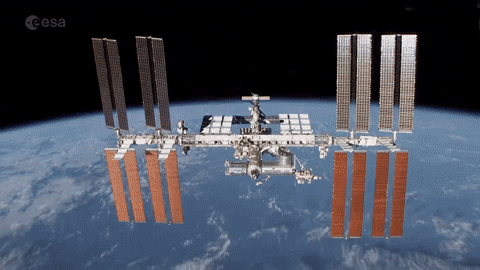CERN - European Organization for Nuclear Research logo.
Feb. 13, 2021
New technique for producing antihydrogen atoms is important milestone for measuring influence of gravity on antimatter
Image above: The AEgIS experiment is built around two powerful superconducting solenoids. (Image: CERN).
It’s a fundamental law of physics that even the most ardent science-phobe can define: matter falls down under gravity. But what about antimatter, which has the same mass but opposite electrical charge and spin? According to Einstein’s general theory of relativity, gravity should treat matter and antimatter identically. Finding even the slightest difference in their free-fall rate would therefore lead to a revolution in our understanding. While the free fall of matter has been measured with an accuracy of around one part in 100 trillion, no direct measurement for antimatter has yet been performed due to the difficulty in producing and containing large quantities of it.
In a paper recently published in the journal Nature Communications Physics, the AEgIS collaboration at CERN’s Antiproton Decelerator (AD) reports a major milestone towards this goal. Using new techniques developed in 2018, the team demonstrated pulsed production of antihydrogen atoms, which allows the time at which the antiatoms are formed to be pinned down with high accuracy.
“This is the first time that pulsed formation of antihydrogen has been established on timescales that open the door to simultaneous manipulation, by lasers or external fields, of the formed atoms, as well as to the possibility of applying the same method to pulsed formation of other antiprotonic atoms,” says AEgIS spokesperson Michael Doser of CERN. “Knowing the moment of antihydrogen formation is a powerful tool.”
CERN is the only place in the world where antihydrogen can be produced and studied in detail. Antihydrogen is an ideal system in which to test the gravitational free fall and other fundamental properties of antimatter because it has a long lifetime and is electrically neutral. The first production of low-energy antihydrogen, reported in 2002 by the ATHENA and ATRAP collaborations at the AD, involved the “three-body” recombination of clouds of antiprotons and positrons. Since then, steady progress by the AD’s ALPHA collaboration in producing, manipulating and trapping ever larger quantities of antihydrogen has enabled spectroscopic and other properties of antimatter to be determined in exquisite detail.
Whereas three-body recombination results in an almost continuous antihydrogen source, in which it is not possible to tag the time of the antiatom formation, AEgIS has employed an alternative “charge-exchange” process whereby the formation of antihydrogen atoms is triggered by a precise laser pulse. This allows the time at which 90% of the atoms are produced to be determined with an uncertainty of around 100 ns.
Several further steps are required before AEgIS can measure the influence of gravity on antimatter, including the formation of a pulsed beam, greater quantities of antihydrogen, and the ability to make it colder. “With only three months of beam time this year, and lots of new equipment to commission, most likely 2022 will be the year in which we establish pulsed-beam formation, which is a prerequisite for us to perform a gravity measurement,” explains Doser.
Following a proof-of-principle measurement by the ALPHA collaboration in 2013, ALPHA, AEgIS and a third AD experiment called GBAR are all planning to measure the free fall of antiatoms at the 1% level in the coming years. Each uses different techniques, and all three have recently been hooked up to the new ELENA synchrotron, which enables the production of very low-energy antiprotons.
Given that most of the mass of antinuclei comes from the strong force that binds quarks together, physicists think it unlikely that antimatter experiences an opposite gravitational force to matter. Nevertheless, precise measurements of the free fall of antiatoms could reveal subtle differences that would open an important crack in our current understanding.
Read the CERN Courier article on this topic: https://cerncourier.com/a/aegis-on-track-to-test-freefall-of-antimatter/
Note:
CERN, the European Organization for Nuclear Research, is one of the world’s largest and most respected centres for scientific research. Its business is fundamental physics, finding out what the Universe is made of and how it works. At CERN, the world’s largest and most complex scientific instruments are used to study the basic constituents of matter — the fundamental particles. By studying what happens when these particles collide, physicists learn about the laws of Nature.
The instruments used at CERN are particle accelerators and detectors. Accelerators boost beams of particles to high energies before they are made to collide with each other or with stationary targets. Detectors observe and record the results of these collisions.
Founded in 1954, the CERN Laboratory sits astride the Franco–Swiss border near Geneva. It was one of Europe’s first joint ventures and now has 23 Member States.
Related links:
Nature Communications Physics: https://www.nature.com/articles/s42005-020-00494-z
AEgIS: https://aegis.web.cern.ch/home.html
For more information about European Organization for Nuclear Research (CERN), Visit: https://home.cern/
Image (mentioned), Text, Credits: CERN/By Matthew Chalmers.
Best regards, Orbiter.ch













































